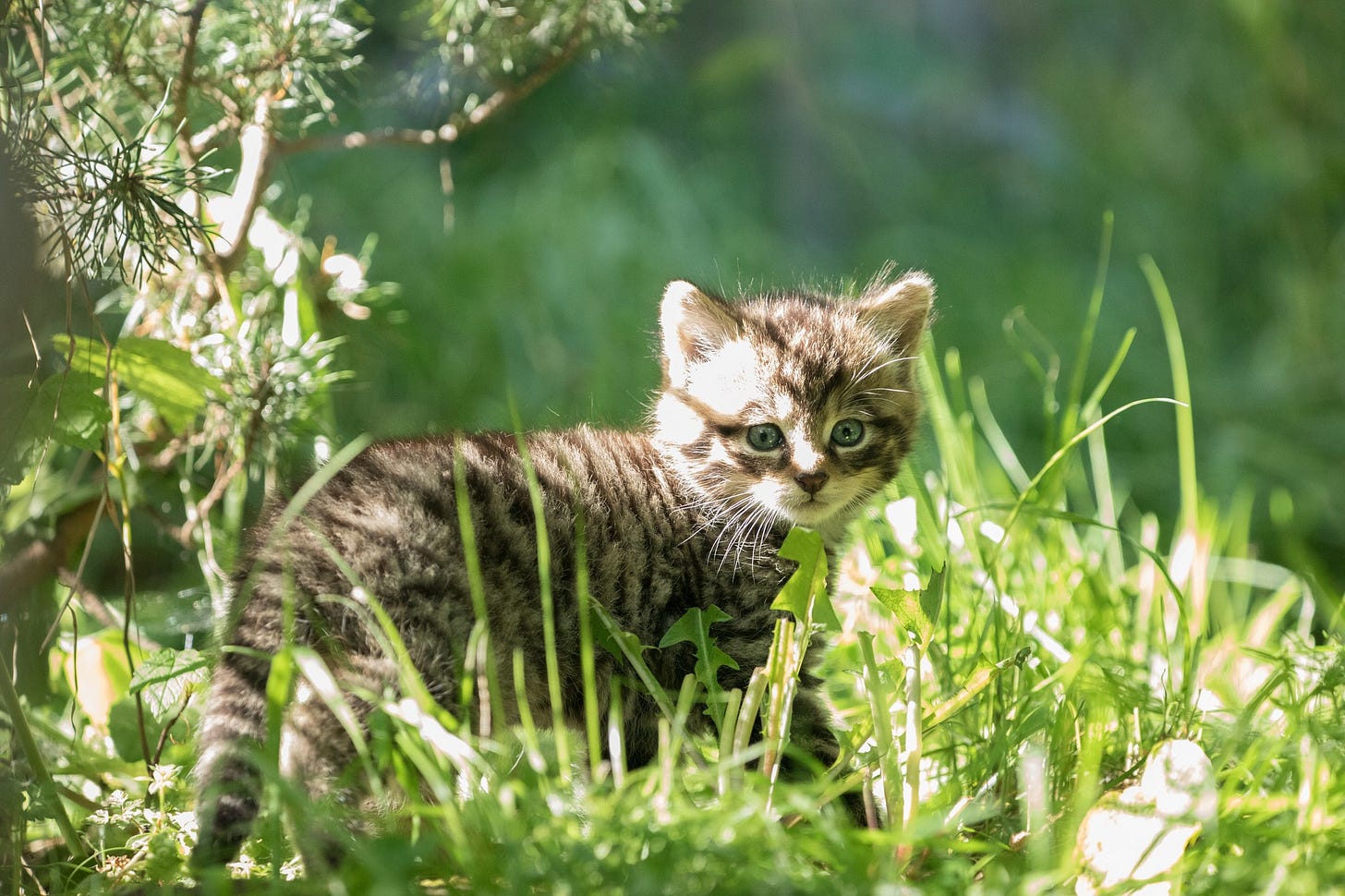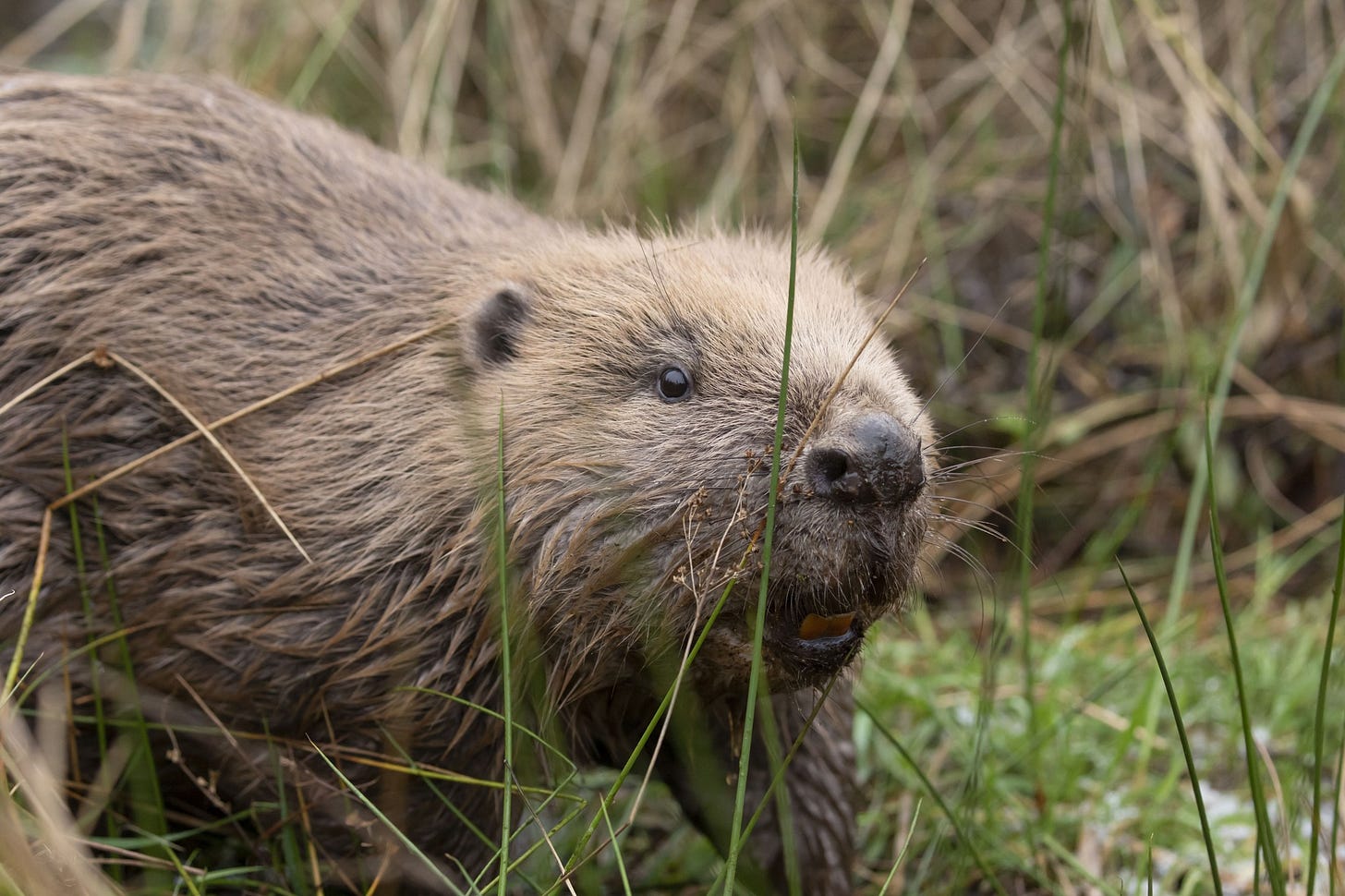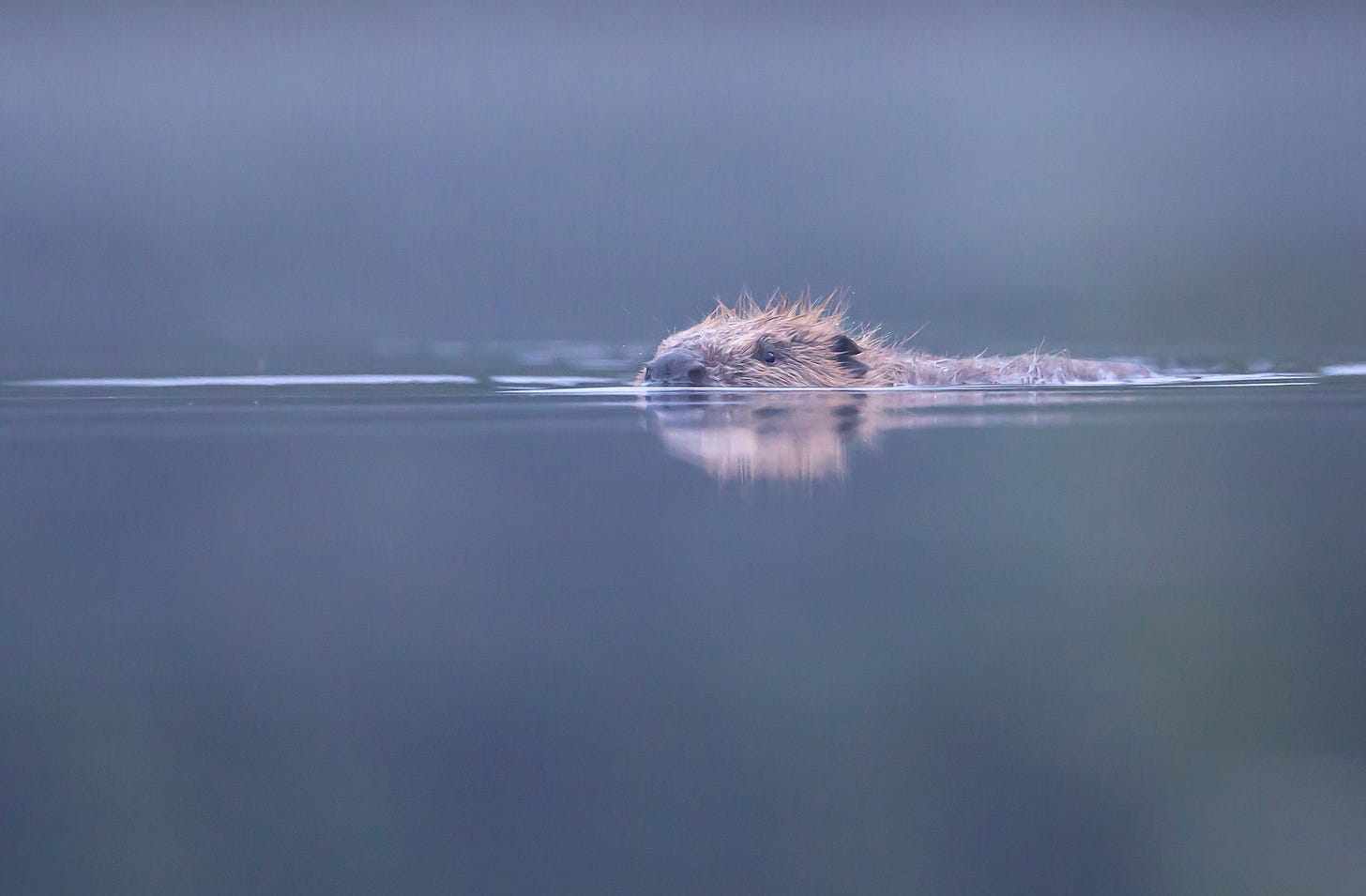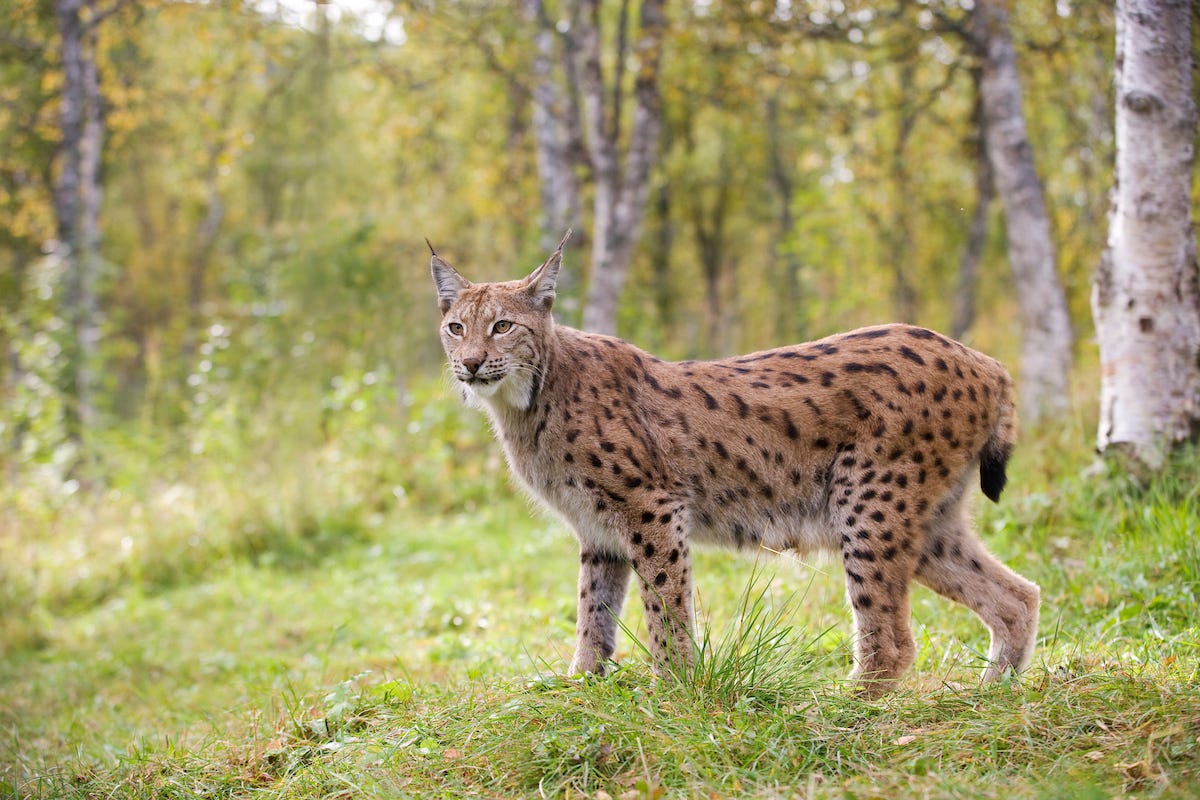Should animals like the wildcat, beaver, and lynx be reintroduced to the Scottish Highlands?
Rewilding programmes are a beast for some, but there are still 'claws' for celebration

This feature first appeared in The Sunday Post on January 28, 2024.
A scrappy young wildcat is surveying his kingdom from the top of a Cairngorms Munro.
He is in the middle of an adventure that will see him cross 18 miles of Highland terrain in less than three days. By the time he finally settles in the glens of Mar Lodge, he will have prowled through acres of rough grassland, scaled sheer cliffs, cut across several mountains, and scrambled back down to the lowlands, following rivers and hunting prey.
Late last summer, a batch of 19 Scottish wildcats were released into the Cairngorms National Park as part of a bold plan by the Royal Zoological Society of Scotland to bolster the native species’ dwindling population.
The Scottish wildcat was deemed “non-viable” following an independent review by the IUCN Cat Specialist Group and, while some still lived in the wild, low numbers and hybridisation with domestic cats meant there were not enough of them to continue a self-sustaining population. Human intervention was needed to prevent the Highland tiger from disappearing forever.
This particular wildcat was one of the last to be released in September 2023. He almost immediately slunk out of the conservation team’s range, and pings from his GPS tracker quickly ceased. After two weeks of searching, it was discovered that he had crossed the Cairngorms plateau and was living happily on the grounds of Mar Lodge Estate in western Aberdeenshire.

Out of the 19 newly released wildcats, he is one of only two who ventured beyond the boundaries of the release site. This makes him both something of a success and a failure for the conservation programme. A success in that a true-born Scottish wildcat is once again stalking the Highlands – a failure in that he has moved too far away from the release site and his fellow female wildcats to help bolster their population. While he may return to the site and mate in the future, he is a reminder that wild animals will largely do as they please.
This is the worry of a small but impassioned group of farmers and crofters who live and work within the Cairngorms National Park. Over the past few years, frustration and anger over rewilding programmes in the park have begun to bubble up, with the most recent flashpoint between farmers and the Cairngorms National Park Authority being over last month’s reintroduction of beavers to the 1,748 square mile area.
Earlier this month, the disgruntled agricultural workers banded together and formed the Cairngorms Crofters and Farmers Group and, in a swell of defiance, showed up to a meeting with the Park Authority on Monday January 15 on tractors and other agricultural machinery, brandishing placards with slogans such as “you can’t eat trees” and “bring us on board”. About 70 farmers and crofters took part in the demonstration.

Robert MacDonald, a local farmer and chairman of the Cairngorms Crofters and Farmers Group, said: “There was no consultation on whether the beavers were coming – we were just told they were. We started negotiations with the national park the day after the licence was issued, so we had no control over whether the beavers were coming or not. With some hard negotiating, we did manage to get increased levels of mitigation for the next two years in the National Park.
“We’ve got the Park Authority to agree to repairing any flood bank damage, and to translocate beavers who are obviously causing damage. That is over and above what is in place in the rest of Scotland and has to be looked upon as a win.
“But what annoyed people was they were not consulted and feel that, over the last 15 years, the Park Authority has ignored the interests and input of the local land managers.”
The Cairngorms National Park Authority (CNPA) disputes claims they did not consult local land managers. Dr Sarah Henshall, Head of Conservation at CNPA, said: “We’ve done a huge amount of work with landowners, communities and farmers, starting with informal engagement back in March 2023, and then six weeks of formal engagement in August and September 2023.
“We have also done 37 site visits, looking at different pieces of land, chatting to landowners and farmers about the benefits, but also the challenges that beavers might bring.”

After being absent from Scotland for 400 years, beavers were illegally reintroduced to the Tay catchment in around 2006. Their numbers multiplied and the population caused damage to local farmland, something the Cairngorms group fears will happen to their farms too.
The CNPA argues the Cairngorms offer more suitable habitats for beavers than Tayside, making them less likely to stray onto farms. They further say the Cairngorms reintroductions have been properly licensed and methodically researched and monitored, making the risk to farmland significantly lower. The CNPA has also appointed a dedicated Beaver Officer, who will be a point of contact for farmers and help them deal early with signs of beaver damage to their farmlands.
However, farmers’ fears over reintroduction have further historical precedent than the damage in Tayside. The 1975 reintroduction of white-tailed eagles to Scotland caused problems for farmers on the west coast. They reported the huge birds were stealing lambs from their pastures which was unusual behaviour, and the problem seemed unique to Scotland.
It turned out the eagles’ breeding season, when they need more food for their chicks, coincided with Scottish lambing season. However, a recent study found Scottish white-tailed eagles’ lamb consumption had significantly decreased over the past 20 years as more pairs formed and established territories.
Following the problems encountered after the reintroduction of beavers and white-tailed eagles, it is understandable some farmers are nervous about such programmes. Yet animals like wildcats, beavers and lynxes can often look after the environment better than humans can.
Beavers, in the right habitat, can make wetlands more diverse and environmentally rich, while also improving water quality. Lynxes can hunt roe deer in thick woodland where it is difficult to shoot them, leading to less overgrazing, and allowing plant life and organisms that rely on them to flourish.

Peter Cairns is executive director of SCOTLAND: The Big Picture, a rewilding charity that is advocating for the reintroduction of the lynx. He said: “Lynx could be here tomorrow, they would do their thing, and they are such shy creatures that hardly anyone would know they were here.
“It’s hard to make generalisations. Some farmers perceive that nature expansion, and people that support it, are wrestling control from a territory they once historically occupied. And farmers are just as entitled to be heard as anyone else.
“But there is no sugarcoating that we face challenges in the climate and biodiversity today that we certainly didn’t before. We can’t maintain the status quo forever.”
Tom Bowser is part of a farming family that has embraced rewilding and allowed beavers to be translocated on to their farm in Argaty. He said: “They’ve caused us no problems at all – they’ve only brought benefits. Flooding used to cost us thousands of pounds each winter, but we haven’t had any of that since they arrived.”
Read more at Highway Kind.



